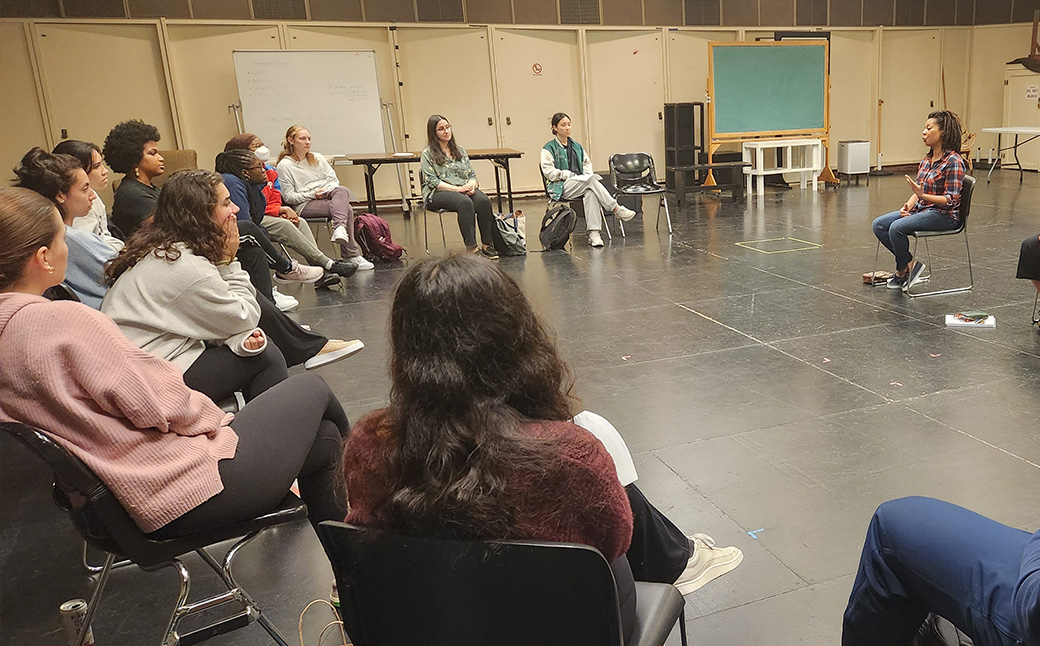The Negro Ensemble Company connects with students
Posted November 7, 2023

Breathe actor Kenya Wilson, who plays Kim, a mother in mourning for her son, visited Margit Edwards’ Movement for the Actor course. Breathe explores the role of movement, particularly yoga practice, in helping two women heal from the grief they feel after the violent loss of loved ones. Kenya spoke with students about the importance of movement and the body in developing her character.
Breathe playwright Cynthia Grace Robinson visited with two of Senior Lecturer Brooke O’Harra’s courses, Introduction to Acting and Experimental Playwriting. In speaking to students who had attended the performances over the weekend, Robinson explained about her development as a playwright, which began in earnest while she was raising her two young daughters while also being an English educator. After taking a course with the renowned playwright Sophia Romma, one of her plays was selected for production at the Schomburg Center for Research in Black Culture and it launched her career. She emphasized her background as a first-generation college student and child of working-class parents. “This is not just a path that privileged people can take,” she told students. She also highlighted the possibility of making a life in the arts while pursuing other work, passions and identities. “I’m not just a playwright,” she said, “I’m also a parent, a partner – the most important things in my life are not from my doing and pursuing.” Good teaching and mentorship, she added, could make the difference between a student finding their pathway in a creative field and being discouraged. To O’Harra’s example of a former student football player who had gone on to become an opera singer, Robinson said, “How does that happen? The portal remains open.”
Washington and Robinson, along with McCain, gathered after the Saturday night performance for a vibrant post-show discussion that engaged questions about whose perspectives were missing from stories about gun violence, how to choose joy despite the odds of disaster, and how characters experiencing grief might move “chaotically” from mourning to laughter and back again.


